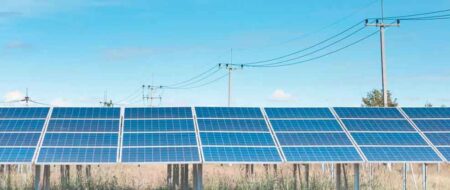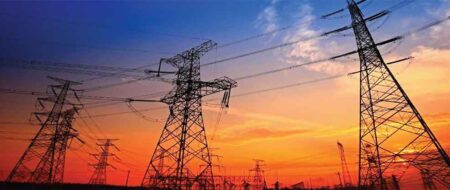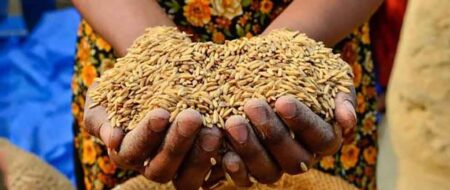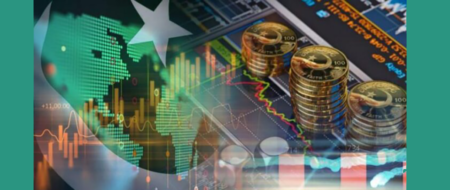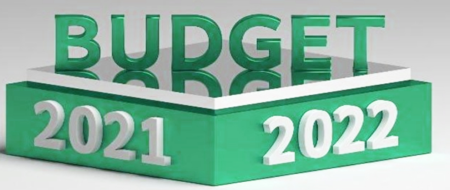Pakistan’s Federal Budget 2006-07 A Review
Policy Perspectives, Vlm 3, No.2
The significance of the budget document lies in the central position it occupies in the financial matters throughout the fiscal year. It emerges as a snapshot of financial resources and their allocation, mobilization, expenditure as well as an index of economic policies and priorities.
In terms of size the 2006-07 budget is 19.7 % bigger than the previous year’s budget. Development Budget has been increased form Rs. 272 to Rs. 435 billion. Current expenditure remains more than double of development expenditure. Debt Servicing and Defence make up 57 % of the total current expenditure. The revenue target is Rs. 841 billion, 15 % higher than the last year. Bank borrowing is Rs. 140 billion against 98 billion in preceding year, posting an increase of 42.89 %. External resources are estimated at 12.68 percent higher i.e. 239 billion against 212 billion of the previous year.
There are number of ways to analyze the budget and each one carries distinct features. The most impressive and sophisticated statistical analysis, highly eloquent linguistic tools and technical terms may resound meaningless in a country where two third of the population lives below or merely above the poverty line. Having access to education, health, housing and even clean drinking water turn out to be a big question mark for the majority of Pakistani population. The budgetary allocations and economic policies remain irrelevant or just political slogans when they play very little or no role in reducing poverty, inflation, unemployment and inequalities from the country. The announcements aimed at strengthening of macro-economic indicators warrant a thorough scrutiny on the similar grounds as the government itself is calling its budget a “relief budget”.
The prospects of betterment in the life of common man heavily rely on the economic activities and consistent growth whereas the growth rate is down from 8.6 % in 2004-05 to 6.6 % in 2005-06. In order to sustain a growth of 6-7 %, an investment of 26-30 percent of GDP is needed but national savings, critically important for investment, are only 16.4 % of GDP, a very low ratio. The part of the problem is that the banking sector is showing no signs of sharing its record profits with the depositors. The profit on national saving schemes are increased by 0.5 to 1.5 percent but no concrete safeguards for protecting the bank depositors’ interests are introduced in the budget.
The exports have risen to $12.073 billion in July-March 2005-06 period, surging by18.6 percent. While the increase in imports in the same period have reached 43.2 percent, causing the outflow of $20.693 billion. The overall trade deficit by June 30 is expected to cross $11 billion. Aside from rationalizations and plausible afterthoughts, no effective measures have been introduced in the budget for addressing the imbalance and huge deficit.
Despite the establishment of a specialized ministry, the budget does not offer any incentives for textile industry, which contributes two-third share in total exports to cope with challenging post quota situation. Instead, additional burden of taxes has been imposed. Huge investment made in the sector during the last three years is not showing any visible results due to lack of appropriate policy response.
The Central Board of Revenue (CBR) has shown considerable progress and collection of revenues is estimated at over 700 billion rupees. The tax net, however, remains very limited. Only 1.3 million people — mainly the salaried class – pay income tax. The number of business units in the country is estimated at 4-5 million. Nothing much has been done toward building the trust between the tax collectors and the potential tax payers. No fundamental change in the tax system is in the offing. Direct taxes are one-third while indirect taxes make up two-third of the total burdening common man. Tax-GDP ratio, 14.4 percent in 1995-96 stands at less than 10 percent today. At a rate of 14.4 percent of GDP, the revenue collection target should have been to the tune of 1200 billion rupees.
Relief measures and their effects
Some important relief measures and announcements are as follows:
· An increase of 15 % dearness allowance in salaries of the government employees
· 50 percent raise in conveyance allowance of government employees of grade 1-16
· Pension increased by 15-20 percent and minimum pension raised to 1300 from 1000 rupees
· Minimum wage increased to 4000 from 3000 rupees
· The grant for daughter’s marriage for industrial workers increased to 50,000 rupees from 30,000 rupees.
· Qualifications based allowances of 500, 750 and 1000 for teachers
· Taxable income increased to Rs. 150000 form 100000 rupees with reduction in rates.
· Availability of pulses at cheap prices, in addition to sugar at Utility Stores and subsidy for wheat, sugar and import of pulses.
· Appointment of price control magistrates
· Subsidies for cheap electricity for power utilities
· Subsides for cheap fertilizers
· Rs. 22.86 and 11.01 billion allocations for education and health sectors respectively.
· Rs. 12 billion self-employment program to provide loans to people of 18-40 years
Will these steps really decrease the difficulties facing ordinary people? To ascertain this, it is necessary to first have a look at how the government really views the difficulties of daily life.
It is claimed that poverty has decreased from 34.46 % in 2000-01 to 23.9 % in 2004-05. Importantly, the ratio is being determined on the basis of calories, with 878.64 rupees per person per month as the poverty line. It is much less than international definitions i.e. “extreme poor” for less than one dollar a day and “poor” for less than two dollars daily. It comes at 14.64 dollars a month, less than half a dollar per day per person. The World Bank and UNDP have also come up with very different numbers suggesting poverty around 28 percent in 2005 based on the same methodology.
The unemployment rate is claimed as 6.5 % through 5.82 million new jobs during 2003-04 to July-December 2005, much higher than an average of 1.0 to 1.2 million per annum. However, employed force is defined as “all persons of ten years and above who worked at least one hour during the reference period and either were paid employees or self-employed”. Besides, 27 percent of the total employed workforces are those men and women who have been included under the heading of “unpaid family helpers”.
The rate of inflation is declared as 8.0 percent that is less than 9.3 percent of the last year. While even 8.0 percent is very high, it can be higher according to independent estimates and seeing the ground realities like prices of oil, sugar, pulses and other daily use items. According to a comparison prepared by the government ministries, prices of a number of essential items are much higher in Pakistan than India and Bangladesh.
The increase in salaries, conveyance allowance and pensions is no doubt welcome. It is, however, less than what is required considering high rate of inflation. 15 percent dearness allowance will be given to employees on their basic salaries which are very low resulting in negligible net increase. 50 % raise in conveyance allowance is too low against the skyrocketing transports fares. Taxable income has been increased, but allowances will also be included in the taxable income making the increase in ceiling meaningless.
Increase in pensions by 15-20 % and minimum pension from 1000 to 1300 rupees is appreciable. But it is very low considering the problems being faced by pensioners and increasing inflation. While minimum wage has been increased from Rs. 3000 to 4000, it is a point to ponder how an average Pakistani family of 6-8 people can sustain itself with a meager mount of 133 rupees a day.
Reduction in prices is limited to pulses, and at Utility Stores alone, serving only a very small segment of population. There are no utility stores in 182 of 380 tehsils. Announcement to open more stores, one in each tehsil, is welcome but this will require considerable time to materialize. Yet one store in each Tehsil headquarter will not be enough.
Education, health and housing facilities
The amount for education has been increased once again and it goes up to 22.86 billion rupees. Three-fourth of this amount, however, Rs16.3 billion, goes to Higher Education Commission. The remaining one fourth, Rs. 6.56 billon is allocated for primary, secondary and college level education. There have been positive impacts of expenditure on higher education. However, considering the actual educational needs of majority of Pakistani population, expenditure on basic educational facilities needs to be increased manifold. Primary enrolment, drop-out ratios and overall prevalence of literacy is worrisome. Expenditure on education as a percentage of GDP is lowest in Pakistan in the region. It stands at 2.1 % as against 4.1 % in India, 3.4 %in Nepal and 2.4 % in Bangladesh.
Despite appreciable increase to 11.01 billion rupees, expenditure on health sector remains 0.51 % of GDP, too low considering the requirements of an increasing population. Besides, whatever is being spent on health is limited to cities. Most of the rural population lacks even basic health facilities. Around Rs. 2 billion were spent on Pakistan Institute of Medical Sciences in Islamabad from the health budget. But no major public sector hospital was set up during 2000 and 2005.
There is a shortage of around 6.2 million housing units in the country. To meet this shortage even in next 20 years, we need to build 500,000 houses every year. Much less, however, are constructed. Construction activities, no doubt, have progressed in the country. It is, however, mainly because of mega projects, big shopping malls and complexes of luxury housing units having little access for ordinary people. The budget does not bring any significant step for this most important need of poor Pakistanis.
Reliability of Statistics
The exercise of budget formulation, presentation and moving ahead with budget targets and measures can be beneficial only when the statistics that are the basis of this work are credible. Although the experts were not fully satisfied even before, situation today has further deteriorated. Statistics Division is not getting due attention making such apprehensions stronger. The State Bank of Pakistan has also expressed its concern. Besides inflation, poverty and unemployment, questions are now being raised even about GDP estimates. The growth in agriculture in year 2005-06 is stated to 2.5 % despite negative growth of 3.6 % in major crops and meager growth of 1.6 percent in minor crops. 2.5 % growth has been shown as a result of 8.0 growth in livestock sector. Growth in this sector requires a biological process that needs time and can not be sudden. Defence expenditure is said to be at 3.7 percent of GDP while it stands at around 5 %. Consumer items’ imports are being shown as machinery.
Governance Problems
Economic activities in the country remain hit by worsening law and order situation. The situation in Balochistan and FATA has continuously been a cause of concern leaving its negative impacts on other areas. Besides, bomb blasts in Quetta, Karachi and other big cities do not signal a conducive environment for economic activities. Kidnapping for ransom, thefts, robberies and murders create an environment where it is not possible for the economic activities to flourish.
Karachi remains in the grip of worst power crisis for the last two months badly affecting the industry and business. The major chunk of Foreign Direct Investment comes from privatization of PTCL, KESC and other public sector enterprises. A recent study by the Economist Intelligence Unit regarding investment, places Pakistan at No. 74 out of 82 countries. Among the new companies being registered by the SECP, manufacturing units are hardly visible.
It is claimed that corruption is being uprooted and there is no corruption at the top level now. But the process of privatization and particularly sale of Pakistan Steel Mills, annulled by Supreme Court, puts many question marks on this claim. A number of government high-ups have allegedly been involved in recent sugar and cement crisis. But neither there is any independent probe nor is there any punishment for those responsible. Abrupt end of NAB’s probe of sugar scandal raises many questions. Recently, a reference was filed against Sindh Chief Minister for allotting plots at throwaway prices. Allegations and counter-allegations such as issuance of license of microfinance bank as a favour by Prime Minister to MNAs make the claims of transparency doubtful.
The resolve to build more water reservoirs shown with groundbreaking of Basha-Diamer dam is welcome. But indecisiveness on projects such Kalabagh dam is creating uncertainty.
It is because of the state of affairs described above that the trust of people in government’s policies and steps is decreasing with every passing day. Credible presentation of facts and figures, transparency in statistics besides governance san weaknesses are necessary for people’s confidence. The stakes of people in economic process and budget develop if these characteristics are present and only then; all the segments of society utilize their energies for targets set at national level. Unfortunately, like past years, the present exercise of the budget too does not present any good picture in this regard.




